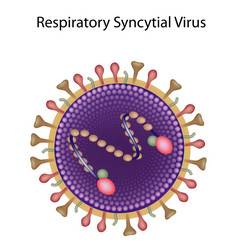Molecular insight into virus budding
Human respiratory syncytial virus (RSV) is the most common cause of bronchiolitis and pneumonia in infants and elderly worldwide. The underlying mechanisms facilitating infection such as virus filament formation and budding is poorly understood. Budding is an essential step in the life cycle of all enveloped viruses. The EU-funded RSV BUDDING (Cellular and viral components in Respiratory Syncytial Virus (RSV) assembly and budding) project investigated the viral and cellular proteins involved in RSV budding by delineating the RSV-host interaction network. RSV primarily infects epithelial cells of the respiratory tract and replicates in the cytoplasm. Viral proteins traffic to the apical cell surface where they assemble into virus filaments and bud out of the cell. Scientists focused on the RSV matrix that coordinates viral assembly and budding at the plasma membrane. It is believed to recruit host factors essential for virus replication. Using a high-throughput microfluidics platform and a custom human proteome library, researchers screened for RSV M-host protein interactions. Scientists identified 24 novel binding partners involved in a range of cellular pathways including host transcription regulation, the innate immunity response, and cellular trafficking. Among those proteins, scientists identified the actin-binding protein cofilin 1 and the zinc finger protein ZNF502 as key mediators for RSV production in infected cells. Furthermore, the consortium generated and studied RSV M mutants defective in assembly and budding. This part of the project allowed them to pinpoint key amino acid residues within M that are critical for the infectivity of the released virus. Through crystallisation experiments, they were able to determine that the RSV M protein assembles into dimers and switches into oligomers when viral filament assembly and virus production take place. Taken together, RSV BUDDING results have important implications for future antiviral strategies targeting the RSV M protein in the host cell. This should provide relief to patients infected with RSV.







